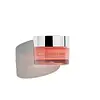What's inside
What's inside
 Key Ingredients
Key Ingredients

 Benefits
Benefits

 Concerns
Concerns

 Ingredients Side-by-side
Ingredients Side-by-side

Polyglyceryl-2 Isostearate/Dimer Dilinoleate Copolymer
EmollientDilinoleic Acid/Propanediol Copolymer
EmollientSimmondsia Chinensis Seed Oil
EmollientCorylus Avellana Seed Oil
EmollientHelianthus Annuus Seed Oil
EmollientParfum
MaskingVanillin
MaskingTocopheryl Acetate
AntioxidantAmmonium Glycyrrhizate
MaskingLithospermum Erythrorhizon Root Extract
Skin ConditioningGlycine Soja Oil
EmollientDiisostearyl Malate
EmollientCI 42090
Cosmetic ColorantBixa Orellana Seed Oil
EmollientTocopherol
AntioxidantPolyglyceryl-2 Isostearate/Dimer Dilinoleate Copolymer, Dilinoleic Acid/Propanediol Copolymer, Simmondsia Chinensis Seed Oil, Corylus Avellana Seed Oil, Helianthus Annuus Seed Oil, Parfum, Vanillin, Tocopheryl Acetate, Ammonium Glycyrrhizate, Lithospermum Erythrorhizon Root Extract, Glycine Soja Oil, Diisostearyl Malate, CI 42090, Bixa Orellana Seed Oil, Tocopherol
Polybutene
Ethylhexyl Palmitate
EmollientHydrogenated Microcrystalline Wax
Emulsion StabilisingDiisostearyl Malate
EmollientHydrogenated Polyisobutene
EmollientC12-15 Alkyl Benzoate
AntimicrobialCopernicia Cerifera Wax
Simmondsia Chinensis Seed Oil
EmollientButyrospermum Parkii Butter
Skin ConditioningCaprylyl Glycol
EmollientCitral
PerfumingHydroxyacetophenone
AntioxidantParfum
MaskingSodium Hyaluronate
HumectantTocopherol
AntioxidantTocopheryl Acetate
AntioxidantBenzyl Salicylate
PerfumingCitronellol
PerfumingHexyl Cinnamal
PerfumingLimonene
PerfumingLinalool
PerfumingIron Oxides
CI 77492
Cosmetic ColorantCI 15850
Cosmetic ColorantCI 77891
Cosmetic ColorantCI 42090
Cosmetic ColorantCI 45410
Cosmetic ColorantCI 19140
Cosmetic ColorantCI 15985
Cosmetic ColorantPolybutene, Ethylhexyl Palmitate, Hydrogenated Microcrystalline Wax, Diisostearyl Malate, Hydrogenated Polyisobutene, C12-15 Alkyl Benzoate, Copernicia Cerifera Wax, Simmondsia Chinensis Seed Oil, Butyrospermum Parkii Butter, Caprylyl Glycol, Citral, Hydroxyacetophenone, Parfum, Sodium Hyaluronate, Tocopherol, Tocopheryl Acetate, Benzyl Salicylate, Citronellol, Hexyl Cinnamal, Limonene, Linalool, Iron Oxides, CI 77492, CI 15850, CI 77891, CI 42090, CI 45410, CI 19140, CI 15985
 Reviews
Reviews

Ingredients Explained
These ingredients are found in both products.
Ingredients higher up in an ingredient list are typically present in a larger amount.
Ci 42090 is a synthetic dye created from petroleum. It is used to give a bright blue color to cosmetics, medicine, and food.
Diisostearyl Malate is an emollient and most often used in lip products. It comes from isostearyl alcohol, a fatty acid, and malic acid, an AHA.
As an emollient, Diisostearyl Malate helps create a thin film on your skin to trap moisture in. This helps keep your skin soft and smooth.
Parfum is a catch-all term for an ingredient or more that is used to give a scent to products.
Also called "fragrance", this ingredient can be a blend of hundreds of chemicals or plant oils. This means every product with "fragrance" or "parfum" in the ingredients list is a different mixture.
For instance, Habanolide is a proprietary trade name for a specific aroma chemical. When used as a fragrance ingredient in cosmetics, most aroma chemicals fall under the broad labeling category of “FRAGRANCE” or “PARFUM” according to EU and US regulations.
The term 'parfum' or 'fragrance' is not regulated in many countries. In many cases, it is up to the brand to define this term.
For instance, many brands choose to label themselves as "fragrance-free" because they are not using synthetic fragrances. However, their products may still contain ingredients such as essential oils that are considered a fragrance by INCI standards.
One example is Calendula flower extract. Calendula is an essential oil that still imparts a scent or 'fragrance'.
Depending on the blend, the ingredients in the mixture can cause allergies and sensitivities on the skin. Some ingredients that are known EU allergens include linalool and citronellol.
Parfum can also be used to mask or cover an unpleasant scent.
The bottom line is: not all fragrances/parfum/ingredients are created equally. If you are worried about fragrances, we recommend taking a closer look at an ingredient. And of course, we always recommend speaking with a professional.
Learn more about ParfumThis oil comes from the seeds of the desert shrub called Jojoba. It is more commonly known as jojoba oil, a non-comedogenic oil.
Jojoba oil does not contain fragrance and has many fatty-acids, making it a great soothing ingredient.
It also contains Vitamin E, a great moisturizing ingredient. Vitamin E is also an antioxidant and protects your skin against oxidative damage.
This ingredient humectant properties, meaning it helps draw moisture from the air. This helps keep your skin hydrated.
While jojoba has antibacterial properties, it is only able to kill some strains of bacteria.
Studies also show it helps in wound healing. In fact, Indigenous cultures have used jojoba as a moisturizer and to help treat burns for centuries.
Fun fact: Jojoba oil similar to natural human skin sebum, so it has a great effect on dry skin. It is also promising with helping to regulate sebum production.
Due to its fatty acid content, Jojoba oil may not be fungal acne safe. We recommend speaking with a professional if you have any concerns.
Learn more about Simmondsia Chinensis Seed OilTocopherol (also known as Vitamin E) is a common antioxidant used to help protect the skin from free-radicals and strengthen the skin barrier. It's also fat soluble - this means our skin is great at absorbing it.
Vitamin E also helps keep your natural skin lipids healthy. Your lipid skin barrier naturally consists of lipids, ceramides, and fatty acids. Vitamin E offers extra protection for your skin’s lipid barrier, keeping your skin healthy and nourished.
Another benefit is a bit of UV protection. Vitamin E helps reduce the damage caused by UVB rays. (It should not replace your sunscreen). Combining it with Vitamin C can decrease sunburned cells and hyperpigmentation after UV exposure.
You might have noticed Vitamin E + C often paired together. This is because it is great at stabilizing Vitamin C. Using the two together helps increase the effectiveness of both ingredients.
There are often claims that Vitamin E can reduce/prevent scarring, but these claims haven't been confirmed by scientific research.
Learn more about TocopherolTocopheryl Acetate is AKA Vitamin E. It is an antioxidant and protects your skin from free radicals. Free radicals damage the skin by breaking down collagen.
One study found using Tocopheryl Acetate with Vitamin C decreased the number of sunburned cells.
Tocopheryl Acetate is commonly found in both skincare and dietary supplements.
Learn more about Tocopheryl Acetate